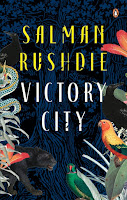I read a book like this and I want to go back to school. The ideas, the people, the history!
We often think of existentialism as something a moody, rebellious teenager goes through, but Bakewell recasts this philosophy for us in her deeply illuminating book. Her cast of characters is huge - from the phenomenologists Husserl and Heidegger in Germany to the superstars of existentialism -Jean-Paul Sartre, Simone de Beauvoir and Albert Camus along with other lesser known but no less important philosophers - Karl Jaspers, Levinas, Merleau-Ponty, Simone Weil, to name a few. Not to mention the famous people these philosophers influenced deeply - Iris Murdoch, Vaclav Havel, James Baldwin.
Bakewell explains the core of what seems to be a complicated philosophy quite simply. Freedom, Sartre says, is at the heart of the human experience. As a human being, I create my nature as I go along. I may be influenced by biology, personal and cultural backgrounds, but none of this completes me or defines my essence - I make my essence up as I go along. "Existence precedes essence." It is a philosophy that debunks anything that impinges on that quest for personal freedom - be it organized religion or the state or racism or patriarchy. Simone de Beauvoir's The Second Sex for example, is a book about how the world imprints itself on a woman through her life, holding her back from her true self. The world makes her a woman - feminine, modest, decorous, restrained at home, forever in thrall of the man's gaze. Written in the forties, it was revolutionary - it made women re-think the lives they led.
In a post-war world, this philosophy asked people to go ahead and make the world they wanted - and it made these philosophers stars. The most interesting parts of the book are when Bakewell combines the biographical and the historical, showing us how each of these philosophers navigated the political circumstances around them - fascism and communism, the Cold War and the anti-colonial movements. And how these circumstances and their personal reactions to them created deep divisions and rifts among these friends and colleagues.
The ideas these existentialists and phenomenologists wrote about were intrinsic to how we see the twentieth century today. The fight against racism, the feminist movement, the anti-colonial movement - all of them at some level, had at its core, the philosophy of existential freedom. It also led to what we today call 'existential angst' - the anxiety we face when confronted with the freedom of personal choice.
But for Bakewell, this philosophy is more relevant today than ever before - at a time when we are surveilled, when issues of race, gender, identity and culture are becoming critical once more, this is a philosophy that puts agency in an individual's hands, refusing to let us off the hook by blaming biology or environment.
Bakewell writes a long book, and parts of the book are less interesting than others. Some of Heidegger's later ideas are not easy to comprehend, for example. But as with her previous book on Montaigne, Bakewell proves to be a great teacher - inviting us into a fascinating world of huge personalities, their mind-altering ideas and the history they made and recorded.
A big recommend for anyone interested in the twentieth century and/ or philosophy.







